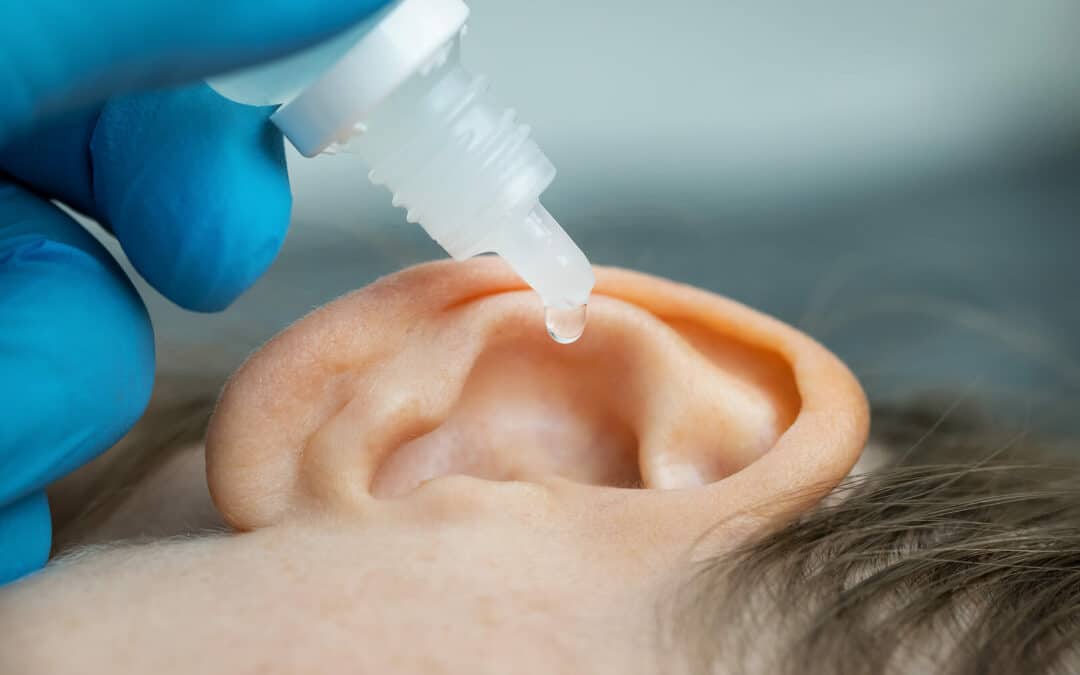Ear wax, also known as cerumen, plays an essential role in protecting the ear canal and maintaining ear health. However, when ear wax accumulates it can lead to discomfort, temporary hearing loss, and an increased risk of infection. Safely removing excess ear wax is crucial for maintaining optimal ear health. The key is to do it safely! Let’s explore safe and effective methods for ear wax removal.
Over-the-Counter Ear Drops
Over-the-counter ear drops, specifically designed for ear wax removal, can help soften and break down excess ear wax, facilitating its natural expulsion from the ear canal. These ear drops typically contain safe and gentle ingredients, such as hydrogen peroxide, mineral oil, glycerin, or saline solution. Following the instructions provided with the ear drops, administer the recommended number of drops into the affected ear and allow the solution to sit for the specified duration to loosen the ear wax.
Ear Wax Removal Kits
Various over-the-counter ear wax removal kits are available, featuring tools such as bulb syringes, irrigation systems, or ear wax removal drops. These kits are designed to provide a safe and effective means of removing excess ear wax at home. When using ear wax removal kits, carefully follow the instructions provided with the specific product to ensure proper application and adherence to safety guidelines.
At-Home Warm Water Rinse
An at-home warm water rinse is a simple yet effective method for softening and removing ear wax. Using a clean dropper, carefully introduce a small amount of lukewarm water into the ear canal, tilting your head to allow the water to reach the affected area. After a few minutes, tilt your head in the opposite direction to allow the water and loosened ear wax to drain out of the ear.
Ear Irrigation (Flushing)
Ear irrigation, also known as ear flushing, is a common and effective method for removing excess ear wax. This procedure involves using a syringe or a specialized irrigation kit to gently introduce a stream of warm water into the ear canal, which helps soften and dislodge the wax. It is essential to use lukewarm water to avoid dizziness or discomfort due to temperature differences. When performing ear irrigation, you’ll also need to tilt your head to the side to allow the water and earwax to drain out.
Seeking Professional Assistance
For individuals with stubborn or impacted ear wax, seeking professional assistance from a healthcare provider or an ear, nose, and throat (ENT) specialist is advisable. These professionals have the expertise and specialized tools to safely remove compacted ear wax. Consulting a healthcare professional becomes particularly important if you have any symptoms such as pain, discomfort, discharge, or sudden hearing loss. You should also consult with an ENT specialist if you have a history of ear problems.
Avoid Cotton Swabs and Other Objects
Contrary to popular belief, inserting cotton swabs or other objects into the ear canal to remove ear wax is not recommended, as it can push the earwax further into the canal, potentially leading to impaction or injury. These objects can also scratch the delicate skin of the ear canal, causing irritation and increasing the risk of infection. It’s best to avoid inserting anything into the ear and instead focus on using safe and gentle methods for ear wax removal.
Visit Us for Professional Support
Taking care of your ears and safely managing ear wax is an important aspect of maintaining overall ear health. You can try these safe ear wax removal methods, such as over-the-counter ear drops, a warm water rinse, or gentle irrigation. Be sure to avoid using abrasive objects, and prioritize gentle and non-invasive techniques for ear wax removal.
If you still notice a buildup of earwax, seek professional assistance. An ENT specialist can help you safely remove impacted ear wax and improve your ear health. This may also reduce tinnitus and stop that full feeling in your ear. Do you struggle with ongoing earwax buildup? Don’t hesitate to visit us for professional support. We offer personalized guidance and assistance for a range of ear, nose, and throat concerns.

